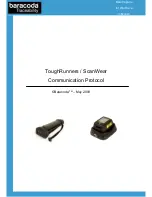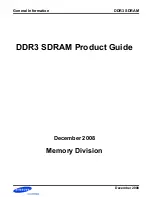
If a beep code is emitted, write down the series of beeps and then look it up in
Table 2
-8
. If you are unable to resolve the problem by looking up the meaning
of the beep code, use system diagnostics to identify the possible cause. If you are still unable to resolve the problem, see "
Getting Help
."
Table 2-
8. System Beep Codes
Warning Messages
A warning message alerts you to a possible problem and prompts you to respond before the system continues a task. For example, before you format a
diskette, a message will warn you that you may lose all data on the diskette. Warning messages usually interrupt the task and require you to respond by
typing
y
(yes) or
n
(no).
NOTE:
If the system boots without a keyboard, mouse, or monitor attached, the system does not issue beep codes related to those peripherals.
Code
Cause
Corrective Action
1-1-2
CPU register test failure
See "
Troubleshooting the Microprocessor
" in "Troubleshooting Your System."
1-1-3
CMOS write/read failure; faulty system board
Faulty system board. See "
Getting Help
."
1-1-4
BIOS error
Reflash the BIOS.
1-2-1
Programmable interval-timer failure; faulty system
board
Faulty system board. See "
Getting Help
."
1-2-2
DMA initialization failure
See "
Troubleshooting System Memory
" in "Troubleshooting Your System."
1-2-3
DMA page register write/read failure
1-3-1
Main-memory refresh verification failure
1-3-2
No memory installed
1-3-3
Chip or data line failure in the first 64 KB of main
memory
1-3-4
Odd/even logic failure in the first 64 KB of main
memory
1-4-1
Address line failure in the first 64 KB of main
memory
1-4-2
Parity failure in the first 64 KB of main memory
1-4-3
Fail-safe timer test failure
1-4-4
Software NMI port test failure
2-1-1
through
2-4-4
Bit failure in the first 64 KB of main memory
3-1-1
Slave DMA-register failure
Faulty system board. See "
Getting Help
."
3-1-2
Master DMA-register failure
3-1-3
Master interrupt-mask register failure
3-1-4
Slave interrupt-mask register failure
3-2-2
Interrupt vector loading failure
3-2-4
Keyboard-controller test failure
3-3-1
CMOS failure
3-3-2
System configuration check failure
3-3-3
Keyboard controller not detected
3-3-4
Video memory test failure
3-4-1
Screen initialization failure
3-4-2
Screen-retrace test failure
3-4-3
Video ROM search failure
4-2-1
No timer tick
Faulty system board. See "
Getting Help
."
4-2-2
Shutdown test failure
4-2-3
Gate A20 failure
4-2-4
Unexpected interrupt in protected mode
See "
Troubleshooting Expansion Cards
" in "Troubleshooting Your System."
4-3-1
Improperly installed or faulty memory modules
See "
Troubleshooting System Memory
" in "Troubleshooting Your System."
4-3-2
No memory modules installed in the first memory
module connector
Install a memory module in the first memory module connector. See "
System Memory
" in
"Installing System Components."
4-3-3
Faulty system board
Faulty system board. See "
Getting Help
."
4-3-4
Time-of-day clock stopped
See "
Troubleshooting System Memory
" in "Troubleshooting Your System." If the problem
persists, see "
Getting Help
."
4-4-1
Super I/O chip failure; faulty system board
Faulty system board. See "
Getting Help
."
4-4-4
Cache test failure; faulty processor
See "
Troubleshooting the Microprocessor
" in "Troubleshooting Your System."
Содержание PowerEdge 850
Страница 90: ......
Страница 132: ...Back to Contents Page ...
Страница 137: ...17 Close the system See Closing the System in Troubleshooting Your System Back to Contents Page ...
















































